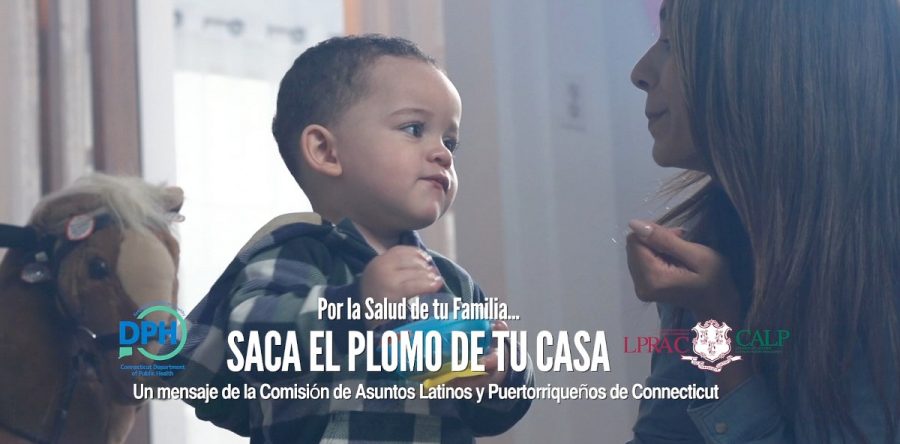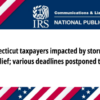Hartford (4/25/16) – The state Department of Public Health’s (DPH) Lead and Healthy Homes Program, in partnership with the Latino and Puerto Rican Affairs Commission (LPRAC) has produced a lead poisoning prevention educational awareness media campaign targeting Connecticut’s Latino population. Childhood lead poisoning among Latino children is nearly double that of White children, motivating the need for targeted education and outreach to this population. Lead poisoning is one of the most preventable public health problems, often going unnoticed because there are no obvious symptoms.
“With the recent national spotlight on the issue of childhood lead poisoning caused by the terrible situation in Flint, MI, this campaign comes at an opportune time. It’s critical for parents to understand that in Connecticut the vast majority of childhood lead poisoning is caused not by drinking water, but by lead paint in homes, particularly older homes and apartments,” said DPH Commissioner Dr. Raul Pino. “This hazard is especially prevalent in our large urban centers, which is why it is critical to educate our Latino population, a large segment of whom live in our cities, about the importance of lead screenings for children.”
Media efforts include two television commercials, airing on Telemundo and Univision from April 25 through June 27 and a radio advertisement on WYRM Gigante 840 AM, WPRX La Puertorriquenisima 1120 AM, WCUM Radio Cumbre 1450 AM, WLAT Radio MEGA 910 AM, and WMRQ Radio Bomba 97.1 FM. Print advertisements will also be produced for three newspapers including, La Voz, Identidad Latina and Tribuna. Additionally, digital advertisements will appear on Facebook, YouTube and Google ads.
“LPRAC is thrilled to launch a comprehensive public educational awareness media campaign about lead poisoning prevention targeting the Latino population in Connecticut. Lead poisoning is 100% preventable and it is unconscionable that in the 21st century we still have areas where Latino children continue to live with unsafe elevated blood lead levels in areas such as Bridgeport, New Haven and Waterbury,” said Werner Oyanadel, Executive Director of LPRAC. “Our emphasis with this project is to create awareness of the importance of parents screening their children age six or younger if they have not been previously screened and highlight current resources to reduce lead exposure. Specifically, our goal is to educate Latino families on specific steps they can take to reduce lead exposure in the most efficient way.”
“LPRAC is very grateful for the financial and technical support provided by the State Department of Public Health. I also commend our LPRAC staff and our colleagues from the Latino Way for producing such a professional informational media campaign that I am sure will help us raise awareness of these critical issues affecting our Latino families in Connecticut,” said LPRAC Chairman, Richard A. Cruz.
According to DPH, lead paint in the home environment is the major cause of childhood lead poisoning in Connecticut. Childhood poisoning caused by lead paint hazards account for approximately 81% of all poisonings, while drinking water in Connecticut accounts for less than 1% of lead poisonings.(Childhood Lead Poisoning Prevention and Control 2013 Annual Disease Surveillance Report, Published April 27, 2015).
To learn more about childhood lead poisoning prevention visit www.ct.gov/preventlead or call (860) 509-7299. The first of the two videos can be found on Facebook at: https://www.facebook.com/Latino-and-Puerto-Rican-Affairs-Commission-125563154173925/?fref=nf or at www.cga.ct.gov/lprac
LPRAC is a nonpartisan policy agency within the legislative branch of government created in 1994 by an act of the Connecticut Legislature (i.e., P.A. 94-152, amended by P.A. 03-229 and amended by P.A. 09-07). Under Public Act 09-07, LPRAC consists of 21 appointed community leaders that are mandated to advise the Connecticut General Assembly and the Governor on policies that foster progress in the Latino communities residing in Connecticut.










